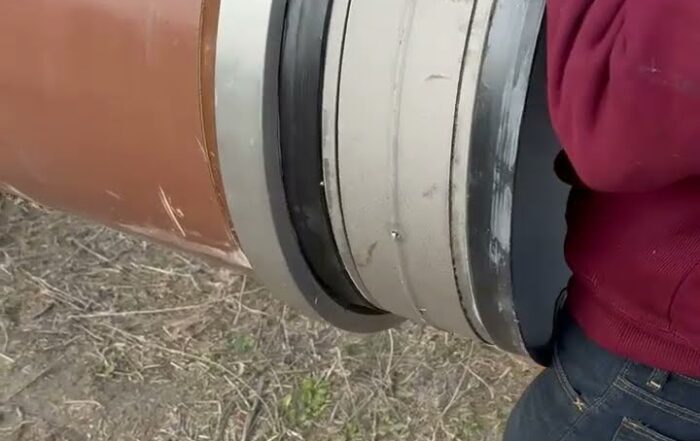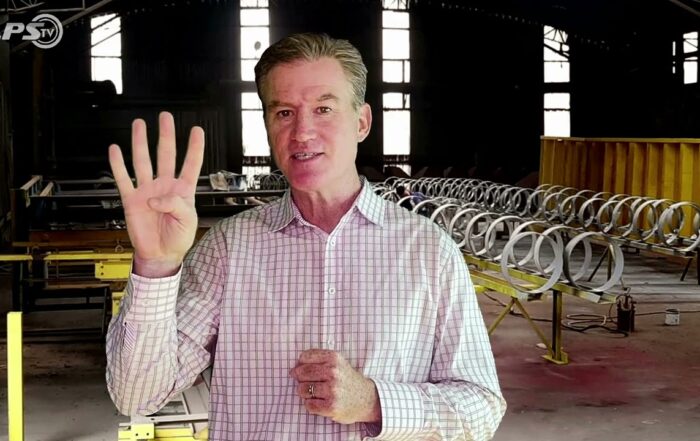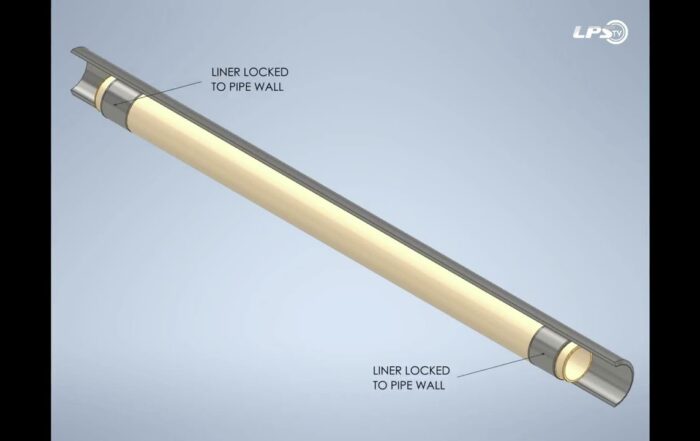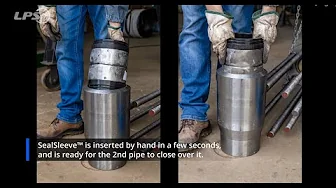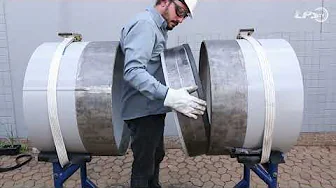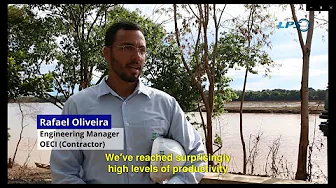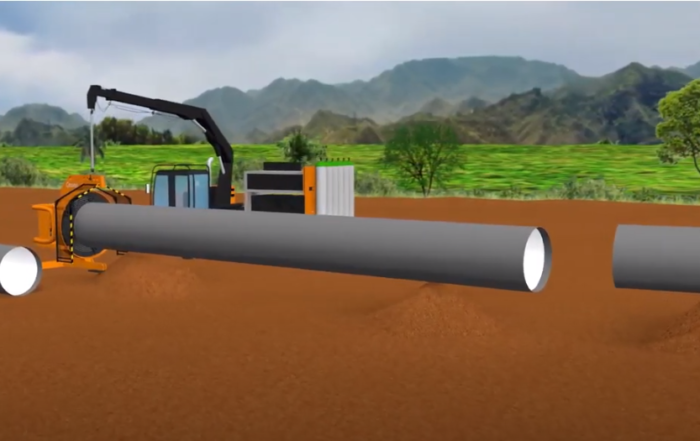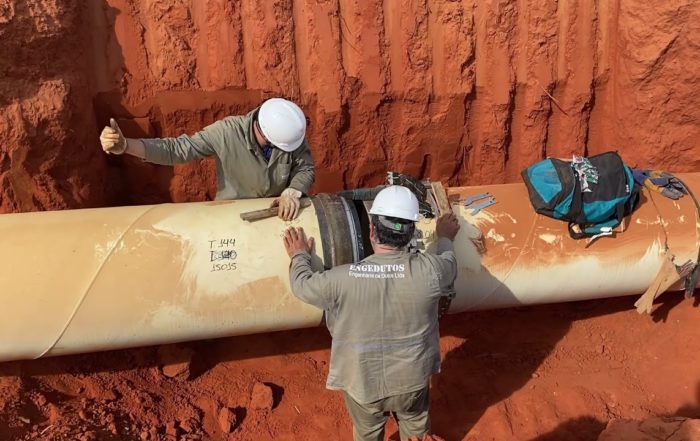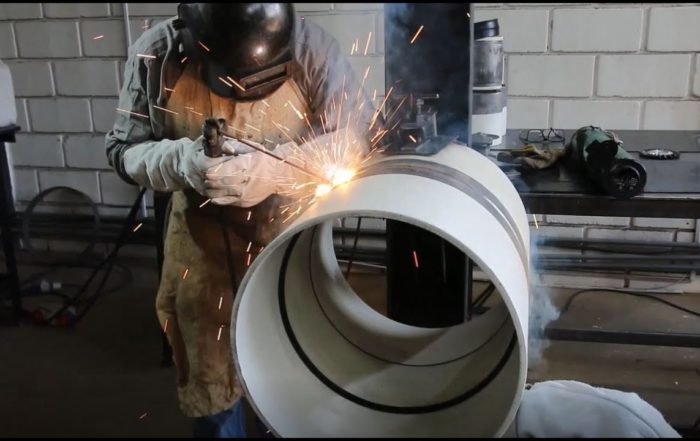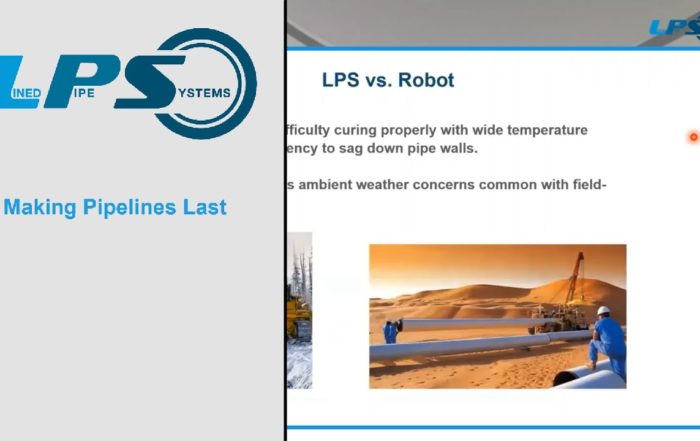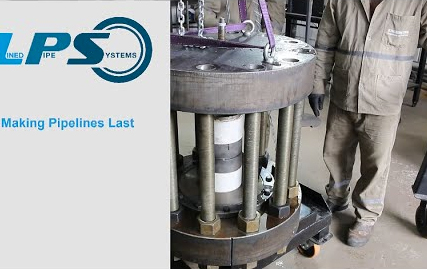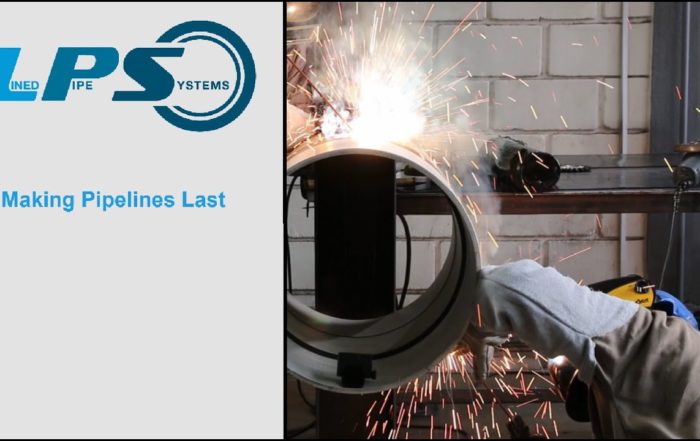A fascinating hydrostatic pressure test of 2 pipe sections at 320 bar (4,600 psi), without a weld.
FlexSleeve completely contains the liquid. FlexSleeve solves one of the largest problems in pipeline infrastructure: how to protect the interior steel of the weld zone from corrosion.
It’s the simplest and most cost-effective long-term solution to internal corrosion.
What is FlexSleeve Hydrotest?
HydroStatic pressure testing is conducted for each pipe to check the integrity and holding capacity of each pipe before it will be used practically. This technique is applied to test the fitness of piping systems, boiler components and other pressure vessels. Hydrostatic testing’s aim is to check whether there is any leakage or not after the equipment is repaired. It is the final quality check before the pipeline is placed in service.
The test is conducted by filling the object with water and both ends of the pipes are closed so that no water get outs. Then pressure is applied to the material and ensured that no leakages can be seen and maximum pressure can be held up without bursting open.
• At 100 kilo pressure (1450 psi), if there were any leaks through the bore seal the internal pressure would push water through the unwelded joint.
• At 200 kilo pressure (2900 psi), the bore seal utilize pipeline pressure to seal The higher the pressure, the tighter the seal.
• At 300 bar (4350 psi), LPSleeves and Joint Lock Rings achieve full seal on pipe ends within API 5L dimensional tolerances.
Benefits of HydroStatic Pressure Testing
This testing allow engineers to examine small holes and check whether there is a leak or not. This inspection is a great way to look for any inconsistencies and repair them before the pipes are used again. This test saves lot more cost before the problem arises later and it will be a costly repair then.
The hydrostatic testing’s duration will be 24 hours after stabilization and the pressure will be 1.5 times the design pressure.
Following necessary equipment is required for hydrotesting:
Equipment for filling and cleaning.
Gauging equipment.
Meters used to measure the volume of the water.
Pressure recording charts.
Pressure gauges with charts.

